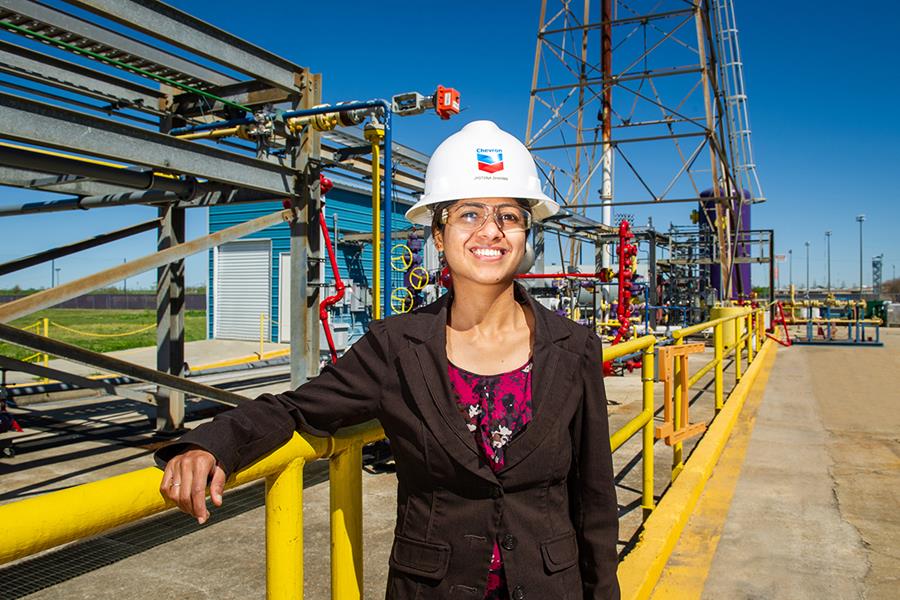Cutting-Edge Technologies Safeguard Old and New Energy Sources
April 06, 2022
Easing the energy transition
Merging multiple new technologies, LSU petroleum engineer and professor Jyotsna Sharma is collaborating with industry to make Louisiana’s oil and gas production safer and more sustainable. She’s using a combination of fiber-optics, quantum light, and artificial intelligence to prevent leaks and spills from new as well as aging infrastructure—either from wells, or the millions of miles of pipeline that stretch like spiderweb across the nation from Louisiana and Texas.
Today, about 80% of Louisiana’s energy needs are met by oil and gas. As a major producer of energy for the nation, about one-third of U.S. oil and gas flows through the state.
“There is no doubt that an energy transition is happening where new energy sources are coming into the mix, but there is also no doubt that, for years to come, most of our energy will come from hydrocarbons,” Sharma said. “Pretty much everything powering our economy today relies on oil and gas, so the question becomes, what can we do to make our production, distribution, and use of hydrocarbons more environmentally friendly?”
Her technology is also compatible with new, green technologies, such as hydrogen and carbon capture, use, and sequestration (CCUS), which is the only approach—other than photosynthesis—we currently have to lower the amount of carbon dioxide, a greenhouse gas, in our atmosphere. The sequestration part consists of storing captured carbon dioxide underground, such as in depleted oil and gas wells. Sharma’s technology can be used to make sure the carbon dioxide doesn’t escape, but instead stays wherever we put it.

Jyotsna Sharma, assistant professor in the LSU Department of Petroleum Engineering and Devon Energy Career Development Professor, deploys, tests, and improves her technology in LSU’s 5,000-foot-deep, full-scale, on-campus test well.
– Elsa Hahne / LSU
“LSU’s Petroleum Engineering Research, Training & Testing facility is unique in the nation for well-testing with downhole instrumentation. We’re now collaborating with LSU and professor Sharma on using fiber optic research to understand the fundamental physics of downhole gas migration. This will advance petroleum engineering science for the entire industry and improve the safety of our drilling operations. You can’t put a price on that.”
- Sai Rao, senior research engineer, ExxonMobil Upstream Research Company


